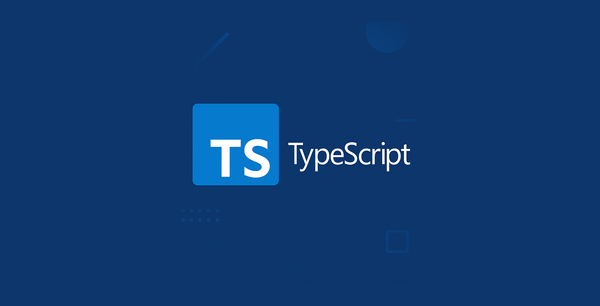Unlocking the Power of Next.js: The Ultimate Guide for Scalable React Applications
Next.js has emerged as the go-to framework for building powerful, production-grade React applications. With native support for server-side rendering, static site generation, routing, API handling, and more — all out of the box — Next.js empowers developers to scale without reinventing the wheel.
Whether you're just stepping into the React ecosystem or you're a senior engineer seeking performance and scalability, this guide will help you harness the full potential of Next.js.
What is Next.js and Why Should You Use It?
Next.js is an open-source React framework developed by Vercel. It enhances the developer experience by offering a powerful hybrid rendering system, built-in routing, API routes, static exports, and zero-config performance optimization.
Key Advantages:
- Server-side rendering (SSR) & static site generation (SSG) out of the box.
- Built-in API routes.
- Excellent SEO support.
- File-system routing.
- Fast refresh and automatic code splitting.

Rendering Strategies in Next.js
Next.js supports multiple rendering modes:
Server-Side Rendering (SSR)
- Renders the page on each request.
- Use Case: Dynamic content that changes per request (e.g., dashboards).
Static Site Generation (SSG)
- Pre-renders at build time.
- Use Case: Marketing pages or blogs with infrequent updates.
Client-Side Rendering (CSR)
- Data is fetched on the client side post-load.
- Use Case: Highly dynamic pages that aren’t SEO-critical.
Incremental Static Regeneration (ISR)
- Re-generates pages after the site is built, based on user traffic.
- Use Case: E-commerce sites with frequently changing product info.
Creating a Next.js Project
Start your project using:
npx create-next-app@latest my-nextjs-app
cd my-nextjs-app
npm run dev
You’ll get a working project with TypeScript support (optional), built-in ESLint, and a folder structure that follows best practices.
Folder Structure Breakdown
Next.js recommends using either the Pages Router or the newer App Router (introduced in v13+).
With Pages Router:
/pages: Each file becomes a route./public: Static assets./components: UI parts./api: Serverless functions.
With App Router:
/app: Enhanced routing with nested layouts and server components./components: Same as above./styles: Optional for custom CSS.

App Router vs Pages Router
| Feature | Pages Router | App Router (v13+) |
|---|---|---|
| Routing | File-based | Enhanced nested layouts |
| Rendering | Client-first | Server-first (Server Components) |
| Performance | Good | Better (with Streaming) |
| Recommended For | Simpler apps | Large-scale apps |
Tip: New projects should adopt the App Router unless you have strong reasons to stick with legacy.
Styling in Next.js
You can use any CSS method in Next.js:
CSS Modules
Scoped per component.
import styles from './Home.module.css'
export default function Home() {
return <div className={styles.container}>Welcome</div>
}
Tailwind CSS
Highly recommended for utility-first styling.
Styled Components
Great for component-scoped styling, it works well with SSR.
Advanced Features You Should Know
API Routes
Create serverless functions directly:
/pages/api/hello.js:
export default function handler(req, res) {
res.status(200).json({ message: 'Hello world' });
}
Middleware (Edge Functions)
Run logic before rendering:
middleware.ts:
import { NextResponse } from 'next/server';
export function middleware(req) {
return NextResponse.next();
}
Image Optimization
Built-in <Image /> component:
import Image from 'next/image';
<Image src="/logo.png" alt="Logo" width={100} height={100} />
Deployment & Performance Optimization
Recommended Host:
Vercel – first-party deployment platform for Next.js.
Performance Tips:
- Enable ISR where applicable.
- Use
<Image />for automatic image compression. - Avoid large dependencies in the client bundle.
- Use
next/fontfor performance-optimized web fonts.

Common Pitfalls to Avoid
- Overusing Client Components – causes larger bundles and slower loads.
- Fetching data on the client when SSR/SSG would perform better.
- Ignoring SEO – use
next/headfor meta tags. - Not leveraging
getStaticProps/getServerSidePropswisely.

Summary
Next.js isn’t just a framework — it's a productivity engine for modern React development. It gives developers everything they need to build fast, scalable, and SEO-friendly web apps. Whether you're building a blog, SaaS platform, or e-commerce solution, Next.js helps you deliver performance without complexity.
Join the Conversation & Learn More!
What are your thoughts on TypeScript? Share your experiences or ask questions in the StepByStack Hub!
Ready to dive deeper?
- Build hands-on projects with our tutorials StepByStack Learn.
- Explore our comprehensive documentation StepByStack Docs.
- Discover more insights on StepByStack Blog.
Resources
- Next.js Documentation
The official documentation covers all features and APIs in depth. - Next.js GitHub Repository
Dive into the source code and stay updated with the latest changes. - Vercel Documentation
Learn how to optimize your deployments and use advanced Next.js integrations. - React Documentation
Understand React fundamentals used under the hood in Next.js.




